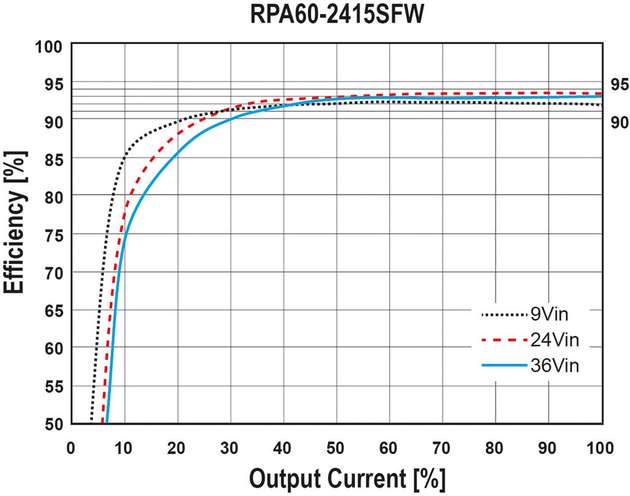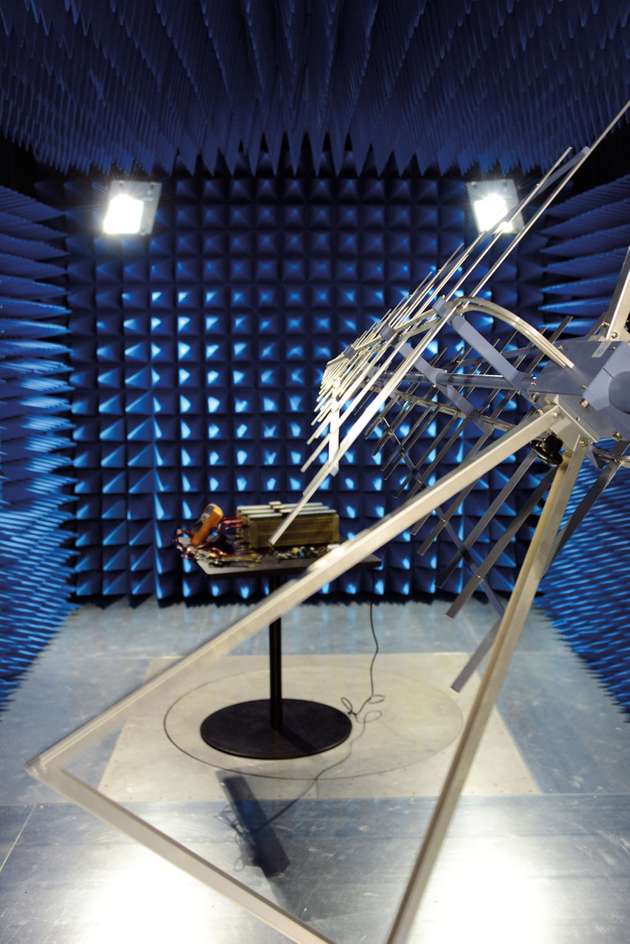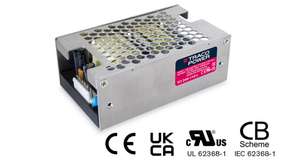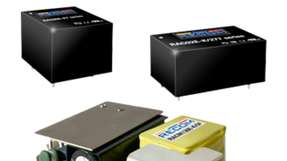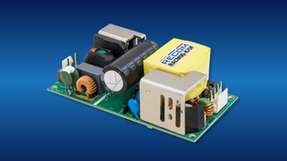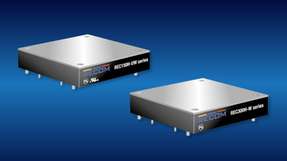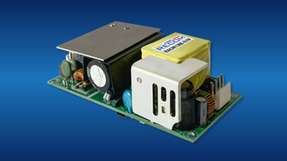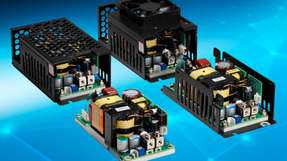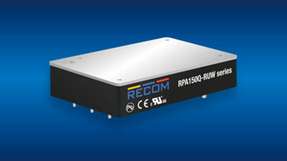The trend towards ever smaller modules and fully automated production is continuing, driven by the developments in sensor technology, IoT and Industry 4.0. The power density of power supplies is also still on the increase, and integration at chip level is progressing at a fast pace, as it allows for the incorporation of additional functionalities in power modules. With its latest products, Recom is not only responding to these trends but also setting new standards. For the new RTC2 series, the company has for instance once more pushed the limits of automated converter production. Although the regulated 2 W converter is no larger than a fingernail, its transformer is wound in a fully automated process, and all soldering points are produced in the same manner. Recom is thus setting new standards – for quality and price.
For power supplies, the trend is towards ever greater power densities. A good example here is the RI3, which packs in nearly three times the power of its predecessor first launched around 15 years ago. At the electronica 2016, Recom will show what it has to offer in the 20 to 120 W power range.
Trend towards miniaturisation continues unhindered
At the electronica 2016, Recom will also launch four new converter series that form part of the RPA family. Available with 20, 30, 60 and 120 W, they offer high power densities of more than 4.5 W/cm³. This has been achieved by using extremely compact, high-efficiency transformers made in a fully automated production process. In their respective power classes, the new converters offer extraordinarily high efficiencies. The RPA60 series with its compact 2x1 inch housing reaches for instance peak values of 93 percent. However the development team of Recom made sure that such peak values are not just achieved at full load, but also in the 40 to 80 percent range that is most relevant for practical applications.
If only 45 W is needed for a particular purpose, a 60 W converter runs at just 75 percent load. If this is a peak wattage that is only rarely reached, the average load can quickly drop to 50 percent. If the efficiency of the module at this level is significantly below that at full load, the power loss and heat dissipation are generally higher than you would think. Recom therefore urges buyers to examine the efficiency of a product across the entire load range that is relevant for their application rather than just the peak values highlighted in the data sheets. They will soon discover that the low-load values of converters differ greatly from manufacturer to manufacturer, even if the peak values under full load are nearly identical. The new RPA60 series thereby also top the pole, as the efficiency remains higher than 90 percent even if the module is run at 30 percent load.
Effect of sensors on power supplies
The huge price drop for sensors will continue to boost SmartHome and IoT applications. Every cent counts. As sensors become cheaper, the number of systems that are networked grows disproportionately, and this applies to all applications, be it in an industrial environment or in the home lighting and automotive field. All these systems need to be powered. In servers and other systems this is done from a central supply, while individual modules and sensors need decentralised supplies. Centralised power supplies are generally powerful units. Decentralised supplies on the other hand consist of small
DC/DC and AC/DC converters with a low wattage.
In order to cover all these applications, Recom decided to extend its electronic power distribution range around two
years ago. Apart from DC/DC converters, the company has increased its development investment in special AC/DC power supplies. A perfect example here are the DIN rail power supplies for installation in switch cabinets. The previously launched range of 45 and 60 W devices has been extended with modules for 120, 240 and 480 W. All power supplies are equally suitable for side mounting, which is of great advantage in switch cabinets with a small installation depth. To increase the output power or to ensure redundancy, these new models can be connected in series.
Mini power supplies for IoT and SmartHome applications
Smart homes and office buildings rely on control systems with a large number of networked low-power components such as sensors and actuators that run in standby mode, waiting for a signal. Recom has developed a number of sturdy and reliable 2 and 3 W power supplies specially designed for such components. Their compact size facilitates installation. The extremely low standby consumption (<0.35 mA), and certification according to all relevant international safety standards for household (IEC/EN60335) and industrial (IEC/EN/UL60950) devices make them the ideal solution for low-power applica-
tion. They of course bear the CE mark.
As the issue of electromagnetic compatibility is a real concern for home applications, all power modules of the RAC family come with a class B filter as standard. They thus eliminate any interference right at the source, so that much smaller filter components such as ferrite cores and chokes can be chosen as would be the case with external wiring. This lowers not only the power requirements in standby mode but also saves material and money, as there is no need for EMC testing.
EMC lab to be made available to customers and third-level institutions
Electromagnetic compatibility (EMC) is a tricky issue, and its importance has increased hugely over the last few years. In order to improve the EMC behaviour of products at all stages along the development process, Recom has built its own
state-of-the-art EMC lab. The 3 m SAR (Semi Anechoic Room) test chamber from Rhode & Schwarz enables Recom to perform measurements conforming to CISPR22 within frequency bands from 9 kHz to 30 MHz (conducted) and 30 MHz to 3 GHz (radiated). The lab also includes all equipment required for measurements according to EN 61000-4-x and EN 61000-3-2.
Compliance with EN 61000-3-2 is particularly important for LED drivers. Last but not least, the in-house GTEM cell enables specialist engineers to determine the radiated immunity of test specimens.
However, the most advanced lab equipment is obviously of no use unless it is operated by qualified personnel. That is why Recom has recruited highly experienced EMC specialists for its lab team. Their knowledge and expertise is now to be made available to business partners and universities who want to tackle EMC-related problems. Recom sees this step as a valuable contribution to technology research in Austria.
EMC seminars help avoid costly mistakes
Several times a year, Recom invites customers to attend two-day EMC seminars held at the company's test centre at Gmunden in Austria where they learn how to prevent design faults in their products, tackling the issue from the very start of their development projects. These hands-on seminars focus on practical solutions. Apart from the general EMC regulations, they cover design-related questions, the use of interference suppression components, measuring technology and tried and tested solutions to overcome interference issues. One whole afternoon is reserved for practical measurements in the lab. The number of participants per seminar is limited to thirty. The course fee is around € 500, including all meals.





